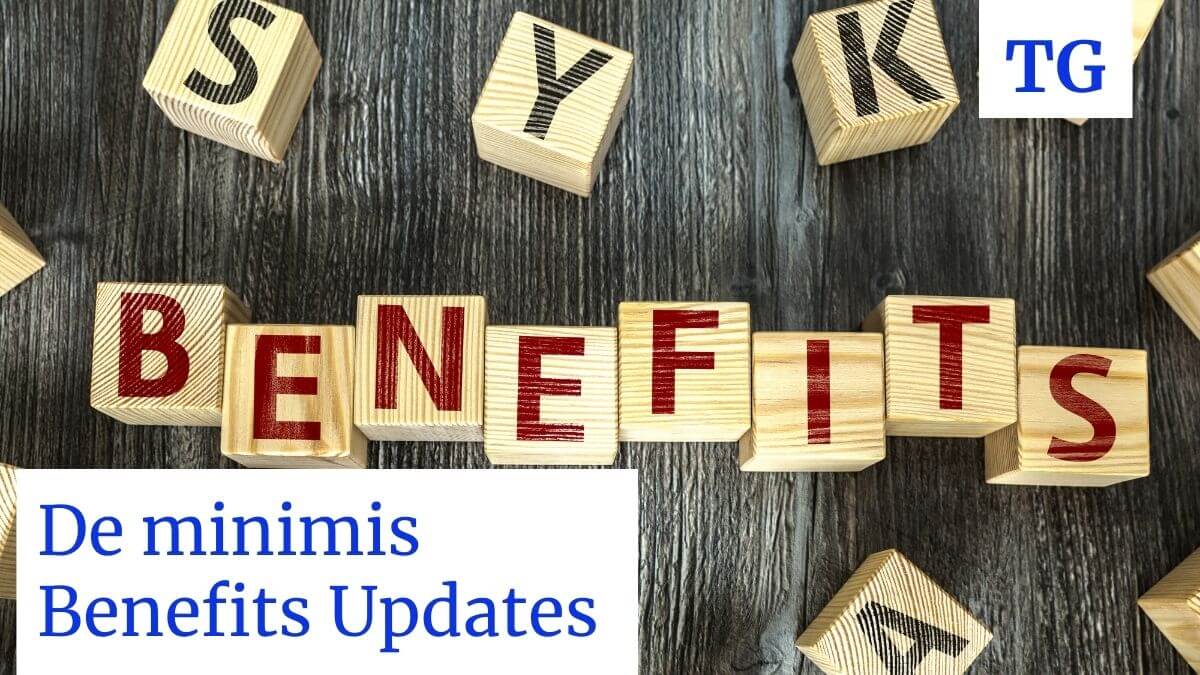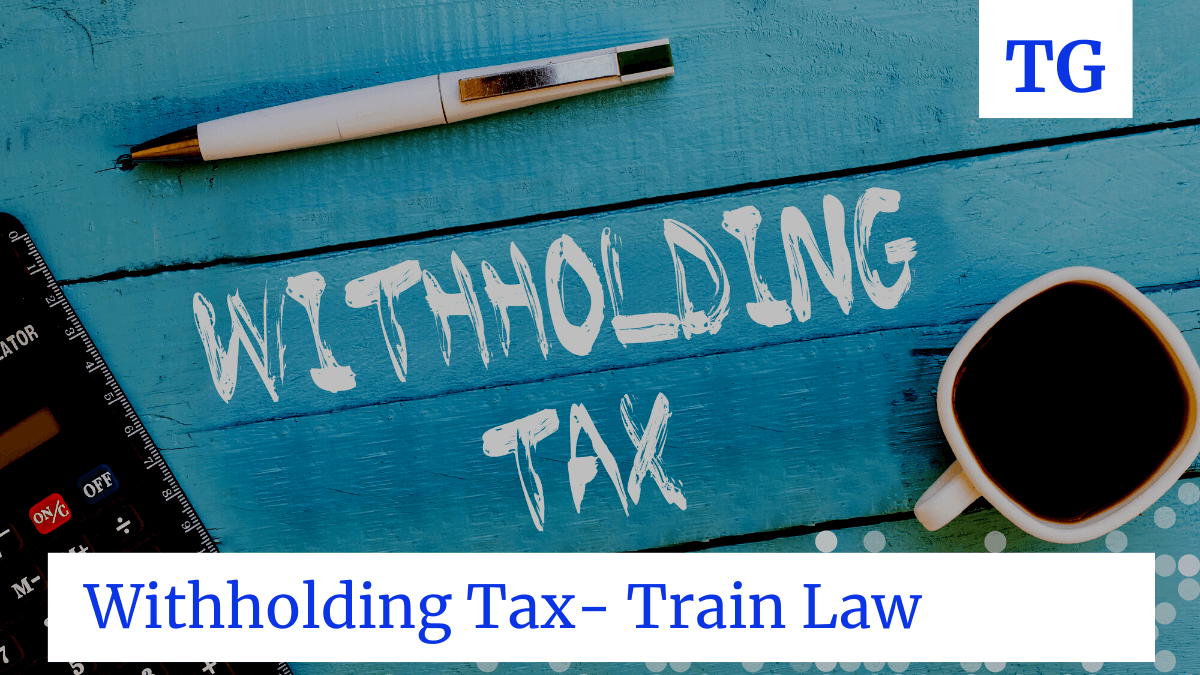De minimis benefits in the Philippines are like little bonuses or perks that your job gives you, which you don’t have to pay taxes on. Think of them as small gifts from your employer – like a little extra cash for unused vacation days, a monthly rice allowance, or even a uniform allowance once a year. These perks are cool because they help make life a bit easier without increasing your tax bill.
Why should you keep reading about them? Well, for starters, knowing about these benefits can help you understand all the nice extras you get from your job that you might not have been paying much attention to. Plus, for employers, offering these benefits is a smart way to keep employees happy without spending a lot on taxes. It’s a win-win situation.
Related: Understanding Fringe Benefit Tax: What You Need to Know
What are the De minimis Benefits in the Philippines
De minimis benefits in the Philippines are essentially small perks or non-monetary compensation provided by employers that are exempt from income tax. These benefits are designed to add to employees’ overall compensation package while encouraging goodwill, efficiency, and loyalty within the company. Here’s a more understandable explanation of each de minimis benefit, including some from previous regulations:
Monetized Unused Vacation Leave Credits
This allows private employees to convert up to 10 days of their unused vacation leaves into cash each year without that cash being taxed.
Medical Cash Allowance to Dependents
Employees can receive up to PHP 1,500 per semester (or PHP 250 per month) as a cash allowance for medical expenses for their dependents, tax-free.
Rice Subsidy
Employers can provide either a sack of rice (50 kg) per month or a cash equivalent of up to PHP 2,000 monthly as a rice subsidy, which is not taxable.
Uniform and Clothing Allowance
Up to PHP 6,000 per year can be given to employees for the purchase of uniforms or clothing required for work, exempt from tax.
Actual Medical Assistance
Employees can receive tax-exempt medical assistance, such as medical allowances or maternity assistance, up to PHP 10,000 per year.
Laundry Allowance
A monthly laundry allowance of up to PHP 300 can be provided tax-free to employees.
Employees Achievement Awards
Awards given to employees for service length or safety achievements, in the form of tangible personal property (not cash or gift certificates), up to PHP 10,000 annually, are exempt from tax. This encourages recognition of employee milestones and contributions.
Gifts for Christmas and Major Anniversary Celebrations
Employers can give gifts worth up to PHP 5,000 for Christmas and major company anniversaries without these being taxed.
Daily Meal Allowance for Overtime Work and Night/Graveyard Shift
An allowance for meals during overtime or night shifts can be provided tax-free, not exceeding 25% of the basic minimum wage.
Benefits under Collective Bargaining Agreement (CBA) and Productivity Incentive Schemes
Any benefits received under a CBA or through productivity incentive schemes, provided they do not exceed PHP 10,000 per year per employee, are not subject to tax.
A Collective Bargaining Agreement (CBA) is a written legal contract between an employer and a union representing the employees. The CBA contains the agreed-upon terms and conditions of employment, such as wages, hours, working conditions, and other benefits. It is the result of a negotiation process between the union (representing employees) and the employer. Once agreed upon, it binds both parties to its terms for its duration, typically ranging from one to five years.
CBAs are significant because they ensure that the rights and interests of both the employees and the employer are formally recognized and protected. They help in preventing labor disputes by providing clear guidelines on various employment conditions. Additionally, CBAs often include mechanisms for resolving disputes that may arise during the term of the agreement.
Regarding revenue issuances related to CBAs, these are typically guidelines, regulations, or circulars issued by a country’s revenue or tax authority to provide clarity on how certain tax laws apply to benefits arising from CBAs. In the context of the Philippines, the Bureau of Internal Revenue (BIR) issues such revenue regulations and circulars.
One relevant revenue issuance regarding de minimis benefits and CBAs is Revenue Regulations No. 11-2018, which was issued as part of the implementation of the Tax Reform for Acceleration and Inclusion (TRAIN) Law (Republic Act No. 10963). This regulation provides the updated list of de minimis benefits that are tax-exempt, including benefits received under a CBA, as long as the total monetary value received does not exceed PHP 10,000.00 per employee per taxable year. This provision ensures that small-value benefits provided to employees under a CBA are not taxed, promoting fairness and supporting the welfare of workers.
Step by Step Guide to Compute De minimis Benefits
Step 1: Identify the Types of De Minimis Benefits Provided
First, list all the de minimis benefits provided by the employer to the employee within the fiscal year. Common types include monetized unused vacation leave credits, medical cash allowance, rice subsidy, clothing allowance, and others as defined under Philippine tax law.
Step 2: Calculate Each Benefit’s Amount
For each type of de minimis benefit, calculate the total amount provided to the employee during the year. This calculation should be straightforward, based on the records of benefits given.
Step 3: Compare with Tax-Exempt Limits
Each de minimis benefit has a specific tax-exempt limit as defined by the Bureau of Internal Revenue (BIR). Compare the amount calculated in Step 2 with these limits to ensure they do not exceed the exempted amounts. For instance, the rice subsidy should not exceed PHP 2,000 per month, and the clothing allowance should not exceed PHP 6,000 per annum.
Step 4: Aggregate the Total De Minimis Benefits
Sum up the amounts of all the de minimis benefits provided to the employee. This total is the gross amount of de minimis benefits the employee received.
Step 5: Check Against the PHP 90,000 Threshold
The total non-taxable amount for combined de minimis benefits, 13th-month pay, and other benefits should not exceed PHP 90,000. If the total de minimis benefits are part of this computation, ensure that the aggregate amount (including the 13th-month pay and other benefits) does not surpass this threshold.
Step 6: Determine Taxable Amount (if applicable)
If the total of de minimis benefits, 13th-month pay, and other benefits exceeds PHP 90,000, the excess amount is subject to income tax. Calculate this excess, as it will need to be included in the employee’s taxable income.
Step 7: Document and Report Appropriately
Ensure that all computations and distributions of de minimis benefits are well-documented for reporting to the BIR and for inclusion in the employee’s payroll records.
How to Compute De minimis Benefits
Maria is a full-time employee of XYZ Corporation in the Philippines. Throughout the year, she receives various benefits from her employer as part of her compensation package, including de minimis benefits.
De Minimis Benefits Received by Maria:
- Monetized Unused Vacation Leave Credits: Maria did not use 5 of her vacation leaves, and her company monetized these at PHP 500/day. Total: PHP 2,500 (Exempted from tax).
- Medical Cash Allowance to Dependents: Maria received PHP 1,500 per semester for her two children. Total: PHP 3,000 (Exempted from tax).
- Rice Subsidy: Maria received a monthly rice subsidy of PHP 2,000. Total for the year: PHP 24,000 (Exempted from tax).
- Uniform and Clothing Allowance: She received PHP 5,000 for the year to purchase a uniform. (Exempted from tax).
- Actual Medical Assistance: Maria availed medical assistance amounting to PHP 10,000 for her surgery. (Exempted from tax).
- Laundry Allowance: Maria received PHP 300/month for her uniform’s laundry. Total for the year: PHP 3,600 (Exempted from tax).
- Employee Achievement Awards: She received a non-cash award worth PHP 9,000 for her 10th work anniversary. (Exempted from tax).
- Christmas and Major Anniversary Gifts: Maria received a gift worth PHP 5,000 during Christmas. (Exempted from tax).
- Daily Meal Allowance for Overtime Work: She earned PHP 200/day for 20 days of overtime work. Total: PHP 4,000 (Exempted from tax).
- CBA Benefits: Under the collective bargaining agreement, she received an additional PHP 10,000 for the year. (Exempted from tax).
Total De Minimis Benefits for the Year:
- Total Received: PHP 61,100
- Tax Exemption: All the benefits Maria received are exempt from tax because each category falls within the exempted limits provided by the BIR under Revenue Regulations No. 11-2018.
Considering the PHP 90,000 Threshold:
Maria also received her 13th-month pay of PHP 60,000, which is also tax-exempt up to PHP 90,000 (including de minimis benefits).
- Total Non-Taxable Compensation: PHP 61,100 (de minimis) + PHP 60,000 (13th-month pay) = PHP 121,100
- Since the combined amount of de minimis benefits and the 13th-month pay exceeds the PHP 90,000 threshold, the excess amount of PHP 31,100 would typically be subject to income tax.
Try our Deminimis Benefits Calculator!
De Minimis Benefits Calculator
Related: How to Start Sari-Sari Store in the Philippines
Conclusion
The de minimis benefits are any benefits given to the employees by the employee, which are mandated by law. In the computation of taxable income for the employee, any excess beyond the allowable amount of 90,000 tax exemption Philippines will be part of the taxable income. The taxable benefits are determined if the services exceed the de minimis benefits threshold per benefit. You accumulate all excess amounts of those benefits to compute if there is any excess on the total de minimis benefits threshold.
Recommended: other updates on train law Philippines.





How about this? My total salary for 2021 is 377444 and other pay that includes allowances is 84000.
I was taxes 32000 for the year. Am i entitled to a refund?
Please check your 2316 and then file your annual income tax to see if you have tax refund or tax payable. I can’t compute the actual tax since I don’t have the actual data. There are other Information needed in computing ITR.
Hi, is the conversion of unused sick leave of a private employee is included in the 90,000 thresholds? Or it is taxable in full automatically? Thank you
May I know the taxable amount for OT?
What if i have 2 employers and receiving allowances and other benefits from both employers. Am i entitled to 90,000.00 limit per employer?
Hi, is the conversion of unused sick leave of a private employee is included in the 90,000 thresholds? Or it is taxable in full automatically? Thank you
Yes, it is part of the 90,000 threshhold when it exceeded 10 days.
if meal allowance for overtime/night shift is not taxable, why the regular 8 hrs work meal allowance is taxable?
because that is no longer as deminimis benefits. What is part of deminimis is for overtime and nightshift only. Therefore, the regular meal allowance would be subject to threshhold of 90,000.
Is the Personal Economic Relief Allowance included in the computation of 90,000 treshhold? Is it included in the 2316 in which part?
It’s subject to income tax as other income however,still subject to 90k threshhold.
Basically de minimis benefit and the 90k cap is different? So if I have an allowance which was part of my taxable benefit I can offset that to whatever remaining balance of the 90k cap so it won’t be taxable anymore?
The above benefits are not subject to income tax as long as within the exempted amount per benefits listed. However, any excess beyond the given amount will be subject to 90k threshhold- including other benefits not listed as deminis benefits. Please specify what type of allowance.
do we need to present document to support the clamming of deminis benefits ?
No need to present documents.
Hi
What if my 13th month already exceeded the 90k ceiling? Does it mean that my full clothing allowance is subject to tax?
Benefits that are subject to deminimis benefits should be subjected first to tax exempt threshhold then the remaining benefits will be subject to 90k threshhold.
Hi
I’ve been receiving my salary and payslip from my company showing that all incentives and allowances are not taxable. But when it comes to BIR form 2316, they added all those incentives and allowances resulting in high tax due.
Question,
Can i dispute this to our company accountant? Or is there any legal remedy to lessen my tax due? On my knowledge those incentives and allowances should not be in form 2316 since it was not being taxed on my monthly salary.
Thanks
Thanks for contacting us. What you can do is, compare the 2316 and the annual income tax return filed by your company. You can see whether there’s a tax refund or payable on your side.
All incentives and benefits, general are not taxable however, when the total incentives and benefits exceeded the 90,000 threshholds then the excess are subject to tax.
How about a 15,000.00 Anniversary Bonus, is it part of the 90,000. 00 threshold in full or is it allowed to split it. The first 5000 as se minimis benefit and the other 10,000.00 to be included in the 90,000 threshold? Thanks
Yes, 5000 is tax exempt benefit while the 10k will be subject to threshhold.
I think there’s an inconsistency in the example above, such that the 2,500 rice allowance is based on 1-month threshold of 2,000. While the clothing allowance of 10,000 is based on an annual threshold of 6,000. I was just clarifying that the rice allowance should also be annualized?
I hope that would be but that’s the law.
Hi, is cell phone load allowance taxable? Thanks in advance!
Basically load allowance are not taxable if the total benefits doesn’t exceed the 90k.
Thank you so much for your reply.
Kudos po for all the help you give!
As we are all aware, clothing allowance is not capped to 7k, but in the guidelines of de minimis benefits, it is still at 6k, does that mean the 1k excess is subject to the 90k rule? or is it the total 7k? And what about the CNA/CBA of 30k, last year it increased to 30k cap, am i just going to add the 30k as part of the 90k rule or should I deduct first the 10k amount which is non-taxable and then the 20k remaining will be part of the 90k rule? Thanks for answering.
Hi RM, regarding to your question, whatever the excess over the deminimis benefits are included to 90K threshhold.